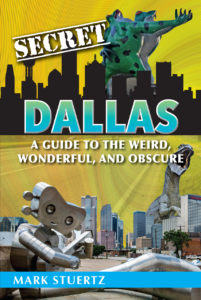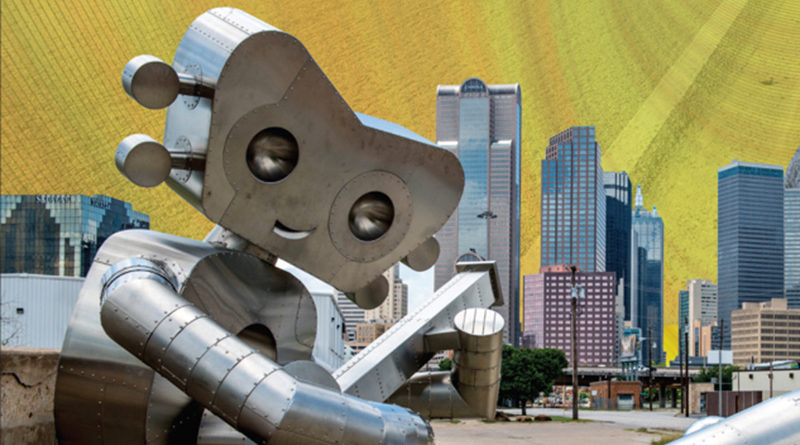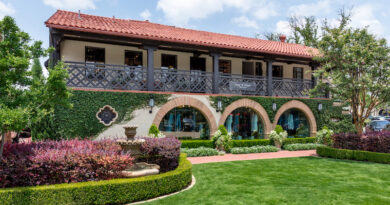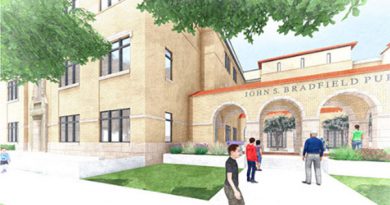‘Secret Dallas’ Author Explores Village, Snider Plaza, Lakeside Park
Every city has its quirky corners and haunting crevices that clutch dark secrets, illicit details, and peculiar facts. Dallas is no exception: It’s an entanglement of idiosyncrasies and unexpected triumphs.

Billed as America’s first shopping center and the prototype for shopping enclaves all over the U.S., Highland Park Village had its DNA stamped in 1906.
That’s when land speculator John S. Armstrong purchased a 1,326-acre stretch bisected by an old cattle trail, now known as Preston Road. He envisioned an exclusive planned community north of the emerging city of Dallas.
To bring his vision to life, Armstrong enlisted architect Wilbur David Cook, designer of Beverly Hills.
Highland Park opened in 1907 as a separate township and was so named because the community was 130 feet higher than Dallas’ elevation and was enveloped in green space.
Roughly a quarter-century later, Highland Park Village emerged. It featured a unified architectural style with stores facing in toward an interior parking area.
But the completion of this luxe shopping destination took an agonizing 20 years as the Great Depression and World War II exacted their toll.
Today, the village features a central fountain, 10 acres of brick paths and walkways, lush landscaping, and the circa-1935 Highland Park Village Theatre—the first luxury suburban theatre in Texas.
In 1938, an in-and-out cash revolution rocked the banking sector on the edge of Snider Plaza in University Park. That’s when the Hillcrest State Bank opened its doors on Hillcrest between Daniel and Haynie Avenues.
The bank was a utilitarian masterpiece designed by architect George Dahl, the creative force behind the 26 signature Art Deco buildings erected in Fair Park for the 1936 Texas Centennial Exposition.
Hillcrest was the first bank ever in the U.S. to feature a drive-through window — no doubt in recognition of the tens of thousands of registered motor vehicles wheeling over a 1,000 miles of paved and unpaved roads crisscrossing Dallas County at the time.
Dahl’s classic design and the bank are long gone. Hillcrest State Bank became Texas Commerce Bank in 1981, and Chase Bank of Texas in 1998 before it was folded into Chase Manhattan Bank in 2000. Hillcrest’s low-rise replacement was vacated in 2012 and demolished in late 2017 to make way for a mixed-use development.

Burrowed deep along Turtle Creek, Lakeside Park is 14-acres of meticulously manicured grounds surrounded by an imposing legion of multi-million-dollar residences.
The park is a showcase of walking paths, sitting benches, and ducks paddling over waters teeming with bass. Traverse the bridge over Turtle Creek Dam and witness the park’s charm offensive cast in stone: enormous teddy bears.
Sculpted by Vermont artist J.T. Williams, the 10-foot-tall mother bear and three 4-foot-tall cubs were commissioned by the Harlan Crow family and gifted to Highland Park on Christmas Day, 1995.
The bears were inspired by bronze sculptures that once graced the stores of FAO Schwarz, America’s oldest toy retailer.
This is just a small dose of the secrets locked in the Big D’s urban landscape.
Sight Seeing
• The Plaza Solana scenic overlook on the West Lawther side of White Rock Lake was funded by Hampton Hodges, who envisioned it as a memorial to his first wife, Buffy.
• The Museum of the American Railroad in Frisco has 1.8 acres, 2,000 feet of track, and 28 pieces of vintage rolling stock.
• Yard Art at Abrams Road and Trammel Drive, where owner Gary Isett displays a cornucopia of the weird, the quirky, even the creepy — a cavalcade of kitsch, including a giant T-rex.
Mark Stuertz is the author of “Secret Dallas, a Guide to the Weird, Wonderful, and Obscure”








